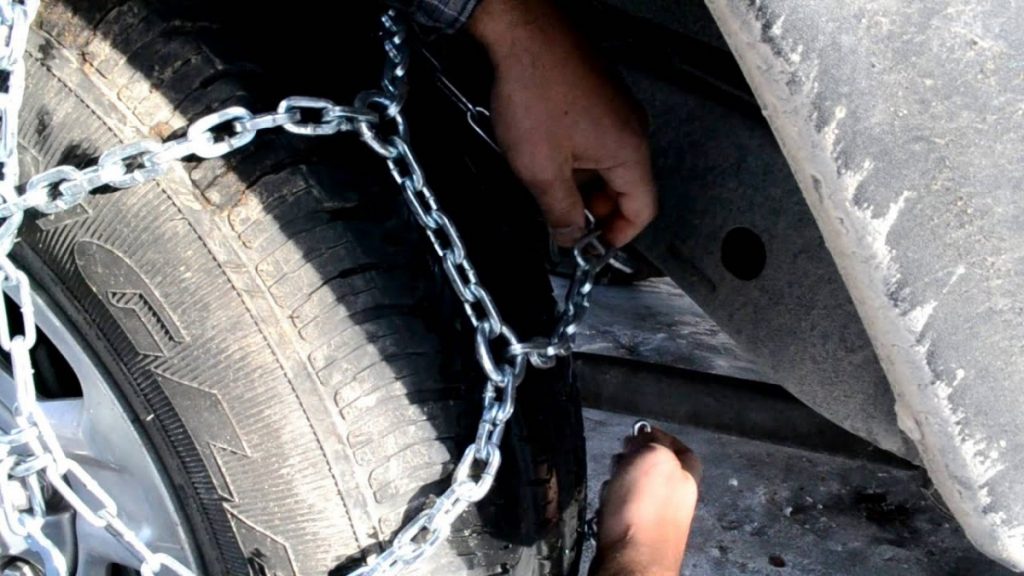If “Jingle Bells” has taught us anything, it’s that dashing through the snow seems like a damn good time. Laughing all the way and making spirits bright, all while “Miss Fanny Bright” rides shotgun? Sounds pretty dope. Dashing off the side of the road in an uncontrolled skid, on the other hand… Much less dope.
Contents
Of course that song was written in 1857, and chances are whatever you’re driving has something a bit more substantial than “one horse” under the hood, in which case you’re going to want to learn how to put on snow chains before taking off o’er the fields. Here’s how to go about that.
Gloves are a good idea. Hat choice is a more personal matter.Proper fitment is the first and arguably most important step for choosing and using snow chains. Get a set that’s too small, and you won’t be able to get them on the tire. Go too big, and you won’t be able to snug them down properly, which is both unsafe and can tear up your tires and wheels in short order.
The good news here is that finding the right size snow chains for your car is also the easiest part of the process. All you need to know is your tire size.
If you already know what size rubber your car is sporting, you’re ready to shop. If you’re not sure, just walk out your front door and take a look at the sidewall of your tires.
The number you’re looking for is typically written in big letters, separated by slashes, dashes, or spaces. Some are smaller and less obvious than others, but it should look something like the “255/30ZR20” in the image below:
Once you’ve got your tire size written down, it’s time to choose a set of tire chains.
Generally speaking, snow chains are pretty low-tech and have been around forever, and all work in more or less the same way by stretching lengths of chain over the tread of your tires to better “bite” into the snow and ice underneath. With that being said, some are simpler and/or more crude than others.
With that being said, some are simpler and/or more crude than others.
The two main factors you’ll want to consider are (a) ease of install and (b) how much you care about your wheels.
As far as installation goes, as we’ll detail below, most chains require you to lay them out, drive over them, then secure them to your tires. Others use a “quick-fit” system that can be installed start to finish on a stationary vehicle. As you’ll read, neither option is particularly difficult with a little practice, but just know some snow chains go on easier, faster, and with fewer steps than other.
In terms of your wheels, the important thing to note is that some chains lay across the surface of your wheels, while others only touch the rubber surfaces of your tires. If you’re a stickler for keeping your wheels nick, scratch, and ding free, you’ll likely want to shop around for a set that doesn’t stretch across the surface of your rims, or at least uses a protective/soft surface at any contact points on your wheel.
Right. Down to business.
As stated above, some snow chains use unique hardware to attach and tighten, but 99% of chains all share the same basic attachment procedure.
The first thing you want to do is find somewhere safe and out of the way to park while you install your chains. Make sure your wheels are straight and that you set the parking brake before getting started. Safety first and all that.
Next, take out your snow chains and determine which side of the chains holds all the fastening/tensioning mechanisms. Some use hooks, some use cams, and some use ratcheting systems, but they all use something. Whatever your chains use, you want to ensure this side goes on the outside of the tire.
Once you’ve got heads or tails of which side is which, it’s time to drape the chains over your tires. Which tires your chains go on depends on whether your vehicle is front, rear, or all-wheel drive. Snow chains always go on the driven wheels, so front-wheel drive cars get chains on the front, rear-wheel on the rear, etc.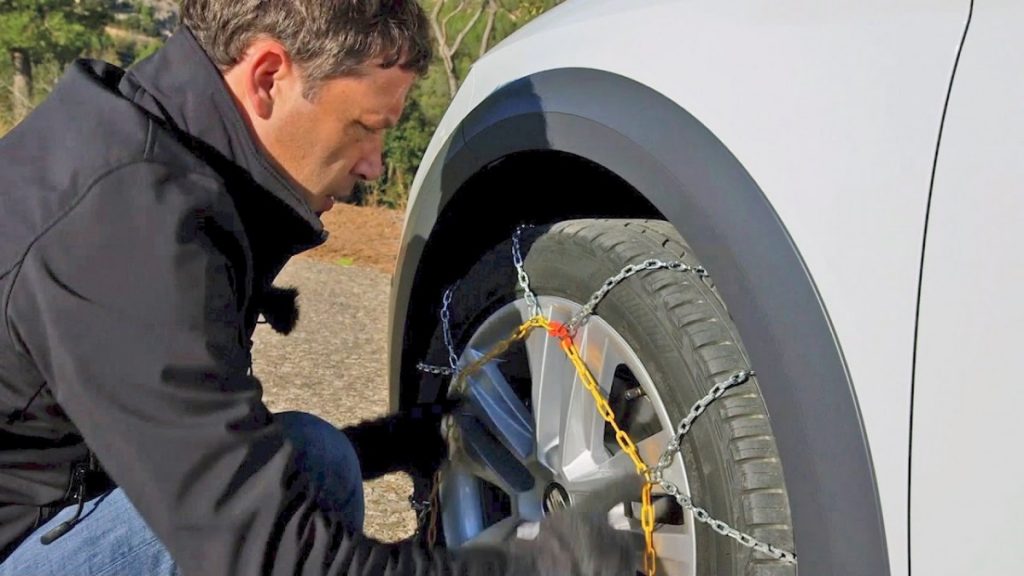
If you’re driving an all-wheel-drive or four-wheel-drive vehicle, typically your chains will go on the front tires to boost traction when steering, but always double check your owner’s manual because those folks probably know your car better than we do.
Right. Start out by draping your chains over your tires, taking care to center them as much as possible with the middle of your tire tread. What we want here is for the bottom inch or two of your chains to sit on the ground, tucked directly in front of the tire, while the remaining slack hangs back toward the rear of the vehicle.
Next, hop back in your car, release the e-brake, and drive about two feet straight forward to get both open ends of the chains around to the rear of the tire. Set the e-brake again, hop back out, and connect the open ends of the chains on both the inside and outside of your tires.
Once the chains are connected, it’s time to tension them down. The goal here, regardless of how your chains tighten, is to get your snow chains snug enough that they won’t squirm around as you drive. Tighten your chains down until you can’t wiggle them around on your tread by hand.
Tighten your chains down until you can’t wiggle them around on your tread by hand.
Once everything feels nice and secure, get back in your vehicle and drive 2-3 car lengths straight ahead. Once again, park and set your e-brake, then get out and recheck the tension of your snow chains. Driving this short distance allows your chains to settle and distribute any remaining slack, so if your chains have loosened up, tighten them down again before you hit the road.
Once your chains are secured, proceed to drive as you normally would in snowy or icy conditions. If you missed our guide on how to drive in the snow, now is the time to check it out.
Apart from that, there are two main things to keep in mind when driving with snow chains on your car.
First, you should never drive over 25mph with jewelry on your tires, no matter how well you’ve snugged them down. Snow chains create an imbalance on your driven wheels, which can lead to high-speed wobbles or outright failure at faster speeds, both of which are a serious safety risk.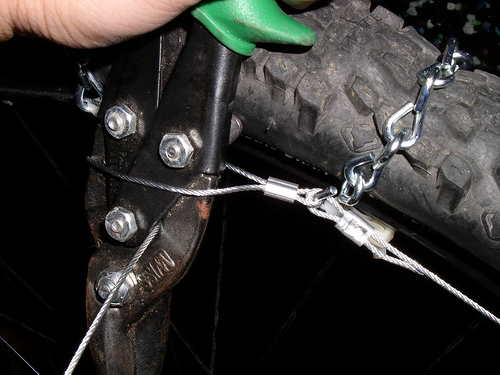
Second, once you get through the snowy portion of your drive, you should take your snow chains back off immediately. On dry pavement, snow chains damage the roads, aggressively wear down your tires, and can even be worn down to the point of failure after a few short miles. We know taking them on and off is a major pain (especially when it’s painfully cold outside) but keeping them on just isn’t worth the risk.
Although 4x4s are not legally required to carry snow chains in places like the Victorian High Country and Alpine National Park (unlike their two-wheel drive cousins), they remain a handy piece of gear to carry and use when venturing out in cold climate areas in winter.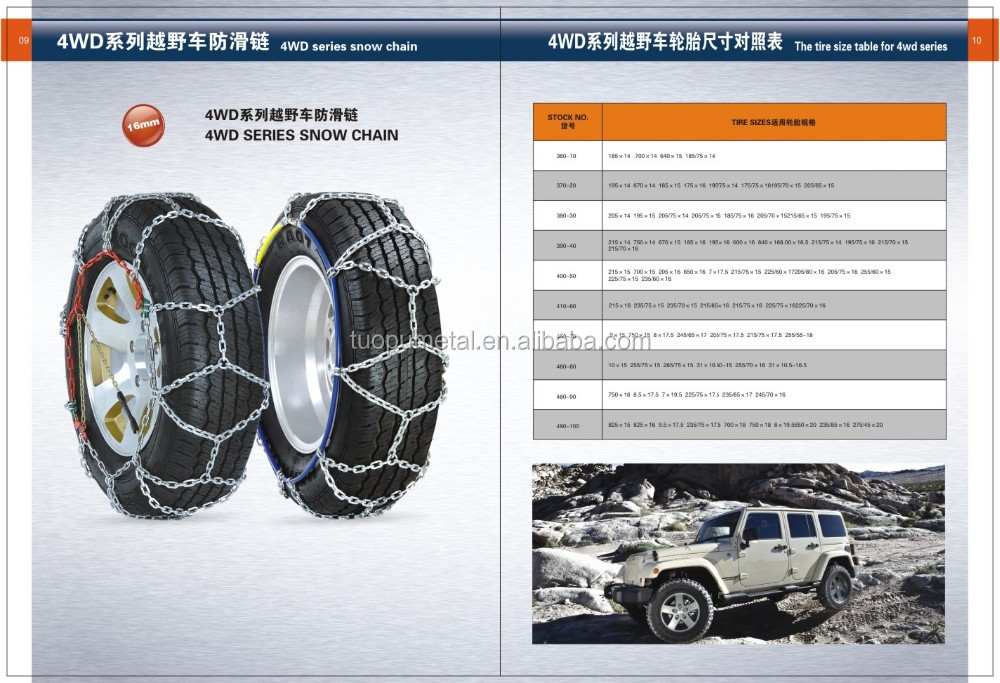 Aside from the traction benefits in getting under way and braking, chains on the front wheels assist in both steering and braking on icy and snow-covered bitumen and dirt roads as well as shallow or deep snow.
Aside from the traction benefits in getting under way and braking, chains on the front wheels assist in both steering and braking on icy and snow-covered bitumen and dirt roads as well as shallow or deep snow.
Advertisements
TYPES OF SNOW CHAINS
There are two main styles of snow chain available, a ladder pattern and diamond pattern.
Ladder pattern snow chains are often not approved for public road use and are designed for private property use. We won’t go too far into these, except to say that as you would expect, the pattern that wraps around your tire is a square ‘ladder’ style pattern, with square chain ribs across your tread. These are the older style chains, and the diamond pattern is often seen as the better alternative.
Diamond pattern is the standard on- and off-road chain used, and the vast majority are approved for use on public roads. The diamond-style chain wraps around your wheel from the inside, and cinches together around the outside of your wheel, with the diamond pattern of chains joining the inner and outer hoops over your tread.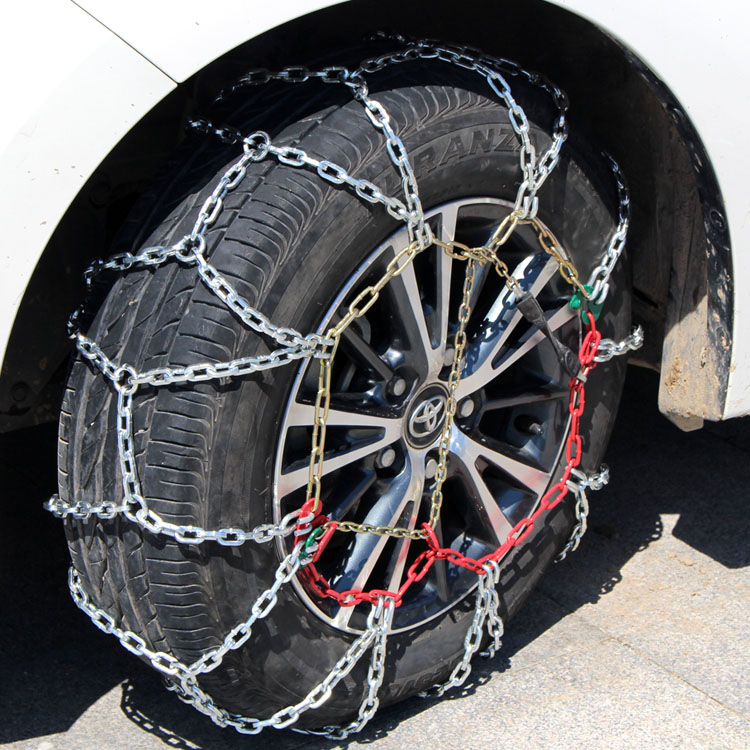
SNOW CHAIN SIZING
Before you purchase or hire snow chains, you will need to know your tyre size to ensure a correct fit. Should they be too loose, they will cause more damage than good, and you run the risk of the chain getting caught in your chassis or undercarriage and locking a wheel; not ideal at 60km/h on ice.
Advertisements
If you have chains that are too tight, you’ll struggle to get them around your tyre, and even if you do, you will find large gaps in the chain that are contacting the ground. There are a few different ‘size guides’ for chains to tyres, and it pays to fit them up as you purchase or hire them to ensure they’re right.
ARE SNOW CHAINS JUST FOR SNOW?
The jury is still out on this one, but for reasons you’d probably not think. In the mud and muck that gives you a six-inch lift to your boots when you walk on it and give you three-inches tyre diameter increase, there is no arguing the fact that snow chains will assist in traction.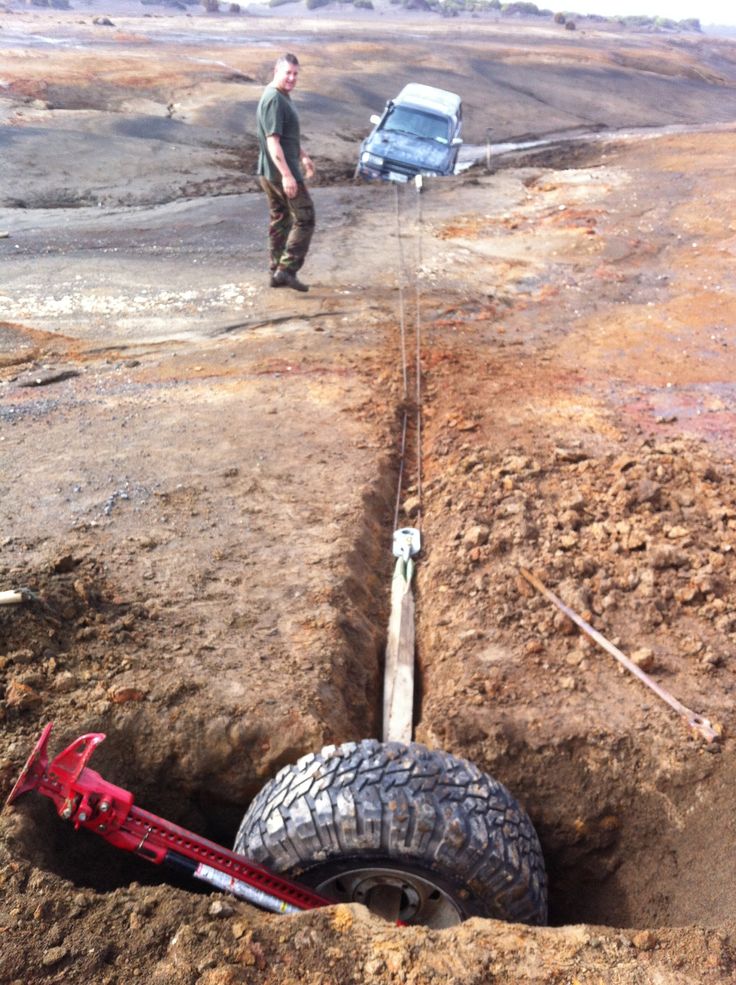 On the other side of this argument however, is that they will tear dirt tracks and mud holes to shreds with a spin of the wheels.
On the other side of this argument however, is that they will tear dirt tracks and mud holes to shreds with a spin of the wheels.
Should you wish to carry and utilise them in more conventional mud/rutted tracks, ensure you tread softly. With the chains on, you will not need to bury the right foot to get through a hole, as the chains will give you the traction you need. That is also without saying that on solid ground, they will tear tyre tread lugs off rather easily, should you go spinning the tyres.
WHERE TO GET SNOW CHAINS
If you’re heading into Melbourne before hitting the High Country, Piranha Offroad has a good stock of quality chains suited to four-wheel drives. The folks there will help you choose the right chains for your adventure, and to suit your tyres.
Alternatively, many of the service stations on the way up into the Alpine National Park have chains; think Bright, Jindabyne, Berridale, Mansfield and Bairnsdale. However, dependant on the time of year, they may or may not have appropriate 4X4 chains in stock to suit your tires.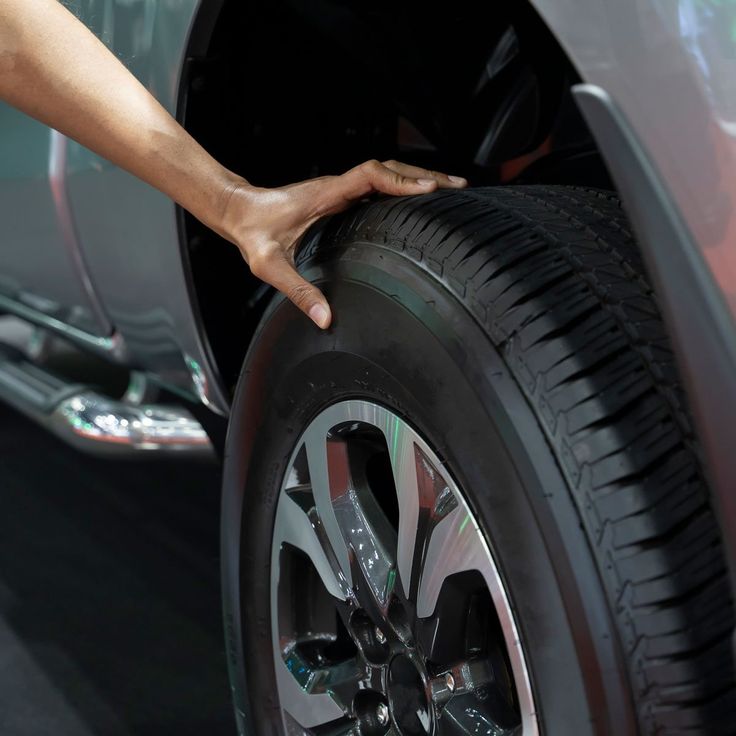 As always, prior preparation is key.
As always, prior preparation is key.
Advertisements
SNOW CHAINS ON THE FRONT OR BACK?
It is best to fit your snow chains to the front wheels if you can. The reason for this becomes very apparent when you try to steer your vehicle without them. Just make sure you check your inner guard clearances beforehand, to ensure you do not damage your vehicle, particularly while turning and flexing simultaneously. If you have the luxury of two sets of chains, then go right ahead and fit them to all four paws, and enjoy the benefits.
CAN YOU CHANGE TYRE PRESSURE WITH SNOW CHAINS ON?
Absolutely yes, and in fact, as with any other off-road situation without chains, it is recommended. Increasing your tyre footprint by lowering your tyre pressure, even with chains, is the way to go for far better performance. Just be aware that you may need to re-adjust your chain tensioning.
 Total
76
Shares
Many people greatly underestimate the usefulness of snow chains, while others, on the contrary, expect too much from them.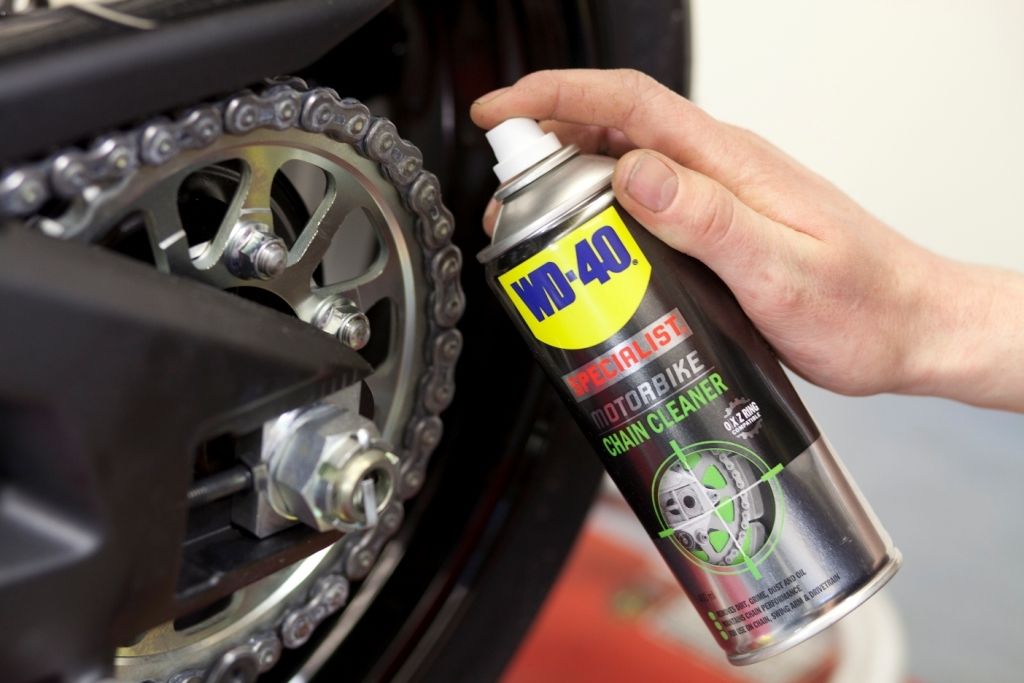 We will tell you how and when chains are used on wheels. In many European countries, snow chains are a mandatory accessory for cars. When winter tires stop running on snow or slick ice, it's time for chains. In addition to snow and ice, chains on wheels work great on slippery clay. Wheel chains should be in the asset of any enterprise that has a loader on its balance sheet, since the use of chains in winter is, first of all, safety and protection. Trucks and mining trucks will get the job done in inclement weather much faster with chains on wheels than without them.
We will tell you how and when chains are used on wheels. In many European countries, snow chains are a mandatory accessory for cars. When winter tires stop running on snow or slick ice, it's time for chains. In addition to snow and ice, chains on wheels work great on slippery clay. Wheel chains should be in the asset of any enterprise that has a loader on its balance sheet, since the use of chains in winter is, first of all, safety and protection. Trucks and mining trucks will get the job done in inclement weather much faster with chains on wheels than without them.
There are many models of chains for wheels for cars , trucks , SUVs , trucks and special vehicles .
Chains differ in the size of the bars on which they are put on and in the type of weaving - “ladder” and “honeycomb”.
Due to the transverse arrangement of the chains, the ladder works better off-road and clings to the ground better, but at the same time, on hard surfaces they are less comfortable and behave like tracks, hitting the surface and slightly increasing the load on the transmission.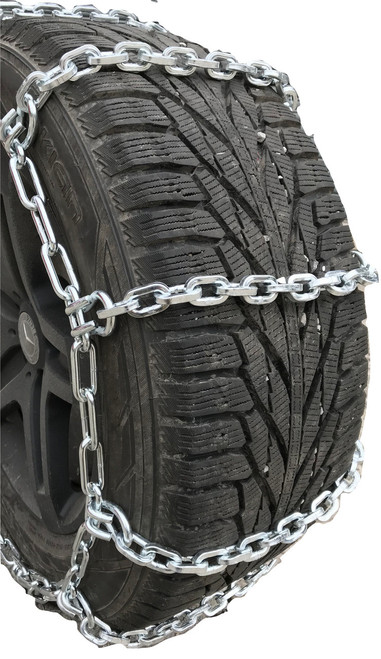
Honeycombs, on the contrary, work great on hard surfaces due to the constant contact of the chain with the surface, but due to the fact that it is located at an angle to the wheel axis, off-road efficiency is slightly reduced.
It is very convenient when the chains can be put on the wheels without jacking up the car or hitting the chain. Such opportunities may simply not exist. Wheeled c anti-skid epis RIF are the most progressive in this regard.
Snow chains fit ONLY IN PAIRS on the drive wheels of one axle of the vehicle. NOT ALLOWABLE to install a chain on only one wheel. After purchasing snow chains , practice installing , do not wait for the very moment when you need to do it urgently. After installation, roll back and forth a few wheel turns, then check if everything is in order and adjust the tension if necessary.
The main thing to remember is that snow chains are so called because they are designed for confident movement on slippery surfaces.
When using chains in swamps, sand or deep snow, the chains will easily strip off the surface layer and you will easily dig in. But on clay or icy surfaces, the chains will bite into the surface and help you move forward confidently.
After using snow chains, they should be cleaned, washed and dried so that dirt and anti-icing agents do not cause corrosion and the chains do not lose their consumer properties for as long as possible.
The chains can be stored either in the fabric bag they are sold in or in the aluminum boxes or plastic protective cases . Who is more comfortable.
If you understand the intended purpose, then the chains in the trunk of your car will become your real assistant.
It is important to remember that chains should not be driven at low tire pressure and at speeds above 30-40 km/h, so as not to damage the wheels and break the chains.
C The cost of wheel chains depends on the size of the wheels and model, but once bought, they can be used for many, many years.
Copying and publishing articles from the site 4 wd.by is possible only with the consent of the administrator.
Everything you need to know about snow chains and how to install them, whether you plan to buy or rent them.
Tire chains are simply a mechanical device designed to be easily slipped onto an existing vehicle wheel to provide a higher level of traction on lying snow or ice. The chains are fixed over the drive wheels and "bite" into the snow, providing traction where the tire could not grip before. We answer some of the most common questions and offer tips and tricks for installing snow chains, whether you're buying one for your own car or using it on a rental car.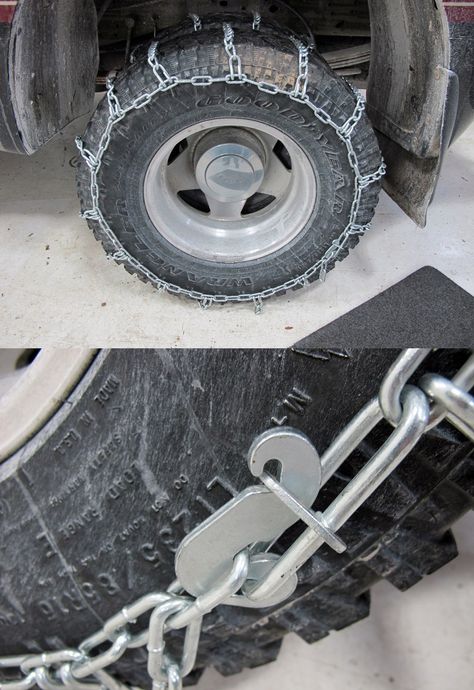
What size snow chains do I need?
It is vital that you have the correct size snow chains for your vehicle/wheel. Snow chains are designed for tires of a certain size. When buying snow chains, check the tire size of your vehicle. This will be displayed on the tire sidewall in the following format;
195/65 R18
The numbers refer to the following (in this example)
tire size
195 = Width - tire width in mm
65 = Profile - tire sidewall depth as a percentage of the width, in this case 65% of 195 mm = 126.75 mm.
R18 = Radius - DIAMETER (not radius) of the wheel in inches
Do you need snow chains on all four wheels?
The short answer is no, but if you have 2 sets of snow chains, it's a good idea to have them on all 4 wheels for optimal traction on snow. The main thing to remember is that snow chains must match the driving wheels of the car.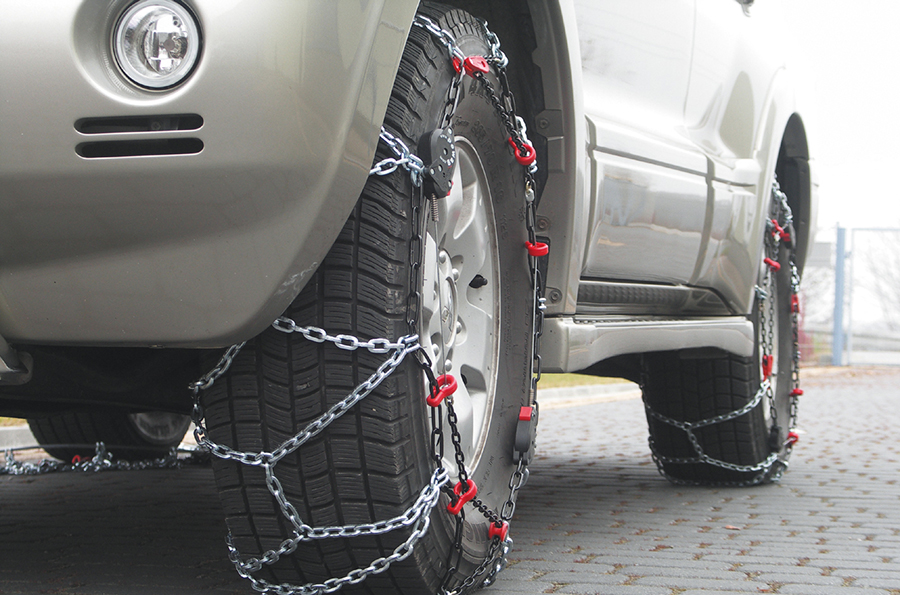 If you rent a car or don't know which wheels are driving, you can easily check which wheels are turning if you get stuck in snow/ice. As a rule, most cars in Europe are front-wheel drive, with the exception of most BMW and Mercedes models. In the US, rear wheel drive is more common.
If you rent a car or don't know which wheels are driving, you can easily check which wheels are turning if you get stuck in snow/ice. As a rule, most cars in Europe are front-wheel drive, with the exception of most BMW and Mercedes models. In the US, rear wheel drive is more common.
Do you need snow chains for your 4x4 SUV?
In short, yes. While all-wheel drive is great for driving in the snow (and any kind of low-grip conditions), you end up with tires acting as contact patches with a very low friction surface, so no matter whether front-wheel drive, rear-wheel drive or all-wheel drive, if the tires can't cling to the road surface (in this case, due to snow), the number of driven wheels won't matter much. If you are installing snow chains on a 4 wheel drive vehicle, it is recommended to install the kit on ALL wheels, however, if you only have 1 set of snow chains, it is recommended to install them on the drive wheels (in most cases, the front wheels).
Do you need snow chains with winter tires?
Just like you need snow chains in 4WD vehicles, in extreme conditions winter tires may not be enough to drive safely on snow. In such cases, it is recommended to install snow chains on winter tires in the same way as on conventional tires.
Snow chain laws. Is it legal to use snow chains?
In some places you are required by law to use snow chains under certain circumstances, and in many places you are required by law to have them with you when needed. Find more information on the Internet about where you need snow chains in Europe.
Maximum speed with snow chains
The maximum recommended speed with snow chains depends on the make and model of the snow chain itself. You should refer to the owner's manual/fitting guide for the specific snow chain you are using.